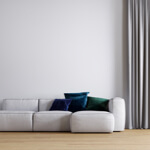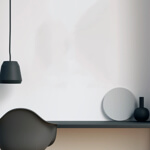Edouard Baldus 1813-1889
Chevet de l'eglise Saint-Pierre, Caen, 1858
Matte Salt print
43.9 x 34.2 cms
17 4/16 x 13 7/16 ins
17 4/16 x 13 7/16 ins
9697
£ 12,000.00
Exceptionally large, rich salt print by Edouard Baldus. Selected by the French government in 1851, Baldus, along with Bayard, Le Gray, Le Secq, and Mestral, was charged with documenting the...
Exceptionally large, rich salt print by Edouard Baldus.
Selected by the French government in 1851, Baldus, along with Bayard, Le Gray, Le Secq, and Mestral, was charged with documenting the new and medieval architecture of the city, as well as the changing landscape of the country, under the Mission Heliographique. Throughout the 1850s, Baldus would return to the churches, cathedrals, and monuments of Paris he first documented with the Mission Heliographique and make new photographs of the same subject, often replicating his former views.
The subject of this rich salt print is the Church of St. Pierre, located in Normandy. Architecturally, it is an apt subject for Baldus, as the apse is specifically noted for its features that embody the transition from Gothic to Renaissance style. He has filled the frame, with these features, and with virtually no background, is truly focusing on the overpowering grandeur of the structure.
An identical view exists in the collections of the Canadian Centre for Architecture.
Selected by the French government in 1851, Baldus, along with Bayard, Le Gray, Le Secq, and Mestral, was charged with documenting the new and medieval architecture of the city, as well as the changing landscape of the country, under the Mission Heliographique. Throughout the 1850s, Baldus would return to the churches, cathedrals, and monuments of Paris he first documented with the Mission Heliographique and make new photographs of the same subject, often replicating his former views.
The subject of this rich salt print is the Church of St. Pierre, located in Normandy. Architecturally, it is an apt subject for Baldus, as the apse is specifically noted for its features that embody the transition from Gothic to Renaissance style. He has filled the frame, with these features, and with virtually no background, is truly focusing on the overpowering grandeur of the structure.
An identical view exists in the collections of the Canadian Centre for Architecture.
Provenance
Private Collection, FranceLiterature
Catalogue Reunion of the Musees Nationaux, 1994Join our mailing list
* denotes required fields
We will process the personal data you have supplied to communicate with you in accordance with our Privacy Policy. You can unsubscribe or change your preferences at any time by clicking the link in our emails.




